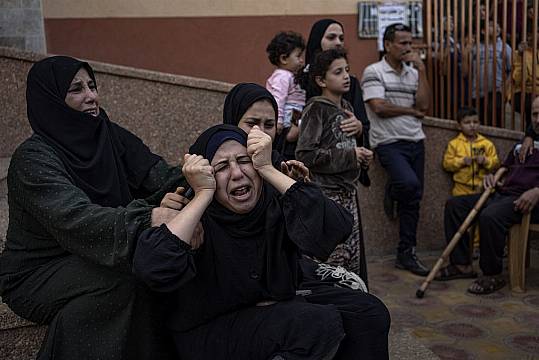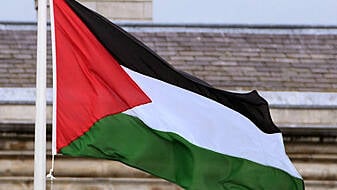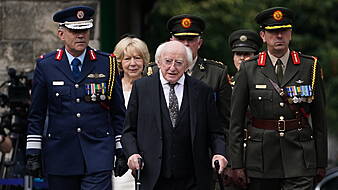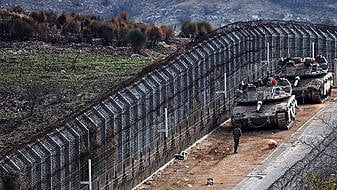Israel’s Prime Minister Benjamin Netanyahu has rejected growing calls from Western allies to do more to protect Palestinian civilians as troops close in on Gaza’s largest hospital, where officials said power has run out.
Israel claims Shifa Hospital is Hamas’ main command post, but the facility in Gaza City still hosts thousands of patients as well as people seeking shelter.
Doctors at Shifa said five patients have died, including a premature baby, after the last generator ran out of fuel.
Mr Netanyahu said the responsibility for any harm to civilians lies with Hamas, and repeated allegations that the militant group uses civilians in Gaza as human shields.
In recent days, fighting near Shifa and other hospitals in the combat zone of northern Gaza has intensified and supplies have run out.
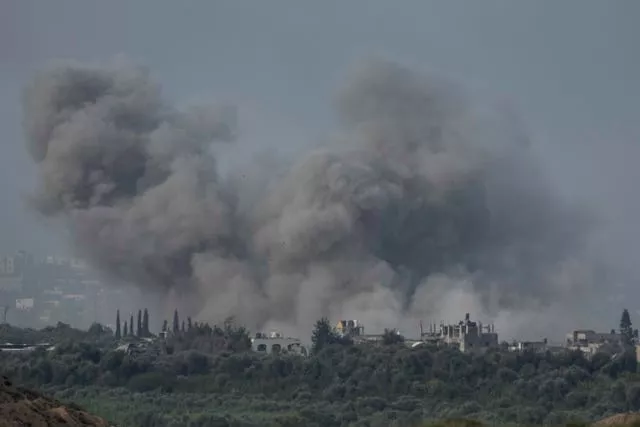
Mohammed Abu Selmia, the director of Shifa – speaking by phone over the sound of gunfire and explosions – said: “There is no electricity. Medical devices stopped. Patients, especially those in intensive care, started to die.”
He added that Israeli troops are “shooting at anyone outside or inside the hospital”, and have prevented movement between the buildings in the compound.
Mr Netanyahu said that while Israel has urged civilians to leave combat zones, “Hamas is doing everything it can to prevent them from leaving”.

His statement came after French president Emmanuel Macron pushed for a ceasefire and urged other leaders to join his call, telling the BBC there was “no justification” for Israel’s ongoing bombing.
Following Hamas’ October 7th attack on Israel, in which at least 1,200 people were killed, Israel’s allies have defended the country’s right to protect itself.
But now into the second month of war, there are growing differences in how many feel Israel should conduct its fight.
Every day, you think it is the worst day and then the next day is worse.
Since the war began, 10,818 people have been killed in the📍#GazaStrip
Among them are our colleagues - the highest number of @UN aid workers killed in a conflict in the history of the United Nations. pic.twitter.com/DCd39NvD25— UNRWA (@UNRWA) November 10, 2023
The US has been urging temporary pauses that would allow for wider distribution of badly needed aid to civilians in the besieged territory, where conditions are increasingly dire.
However, Israel has so far only agreed to brief daily periods during which civilians are able to flee the area of ground combat in northern Gaza and head south on foot along the territory’s main north-south artery.
Since these evacuation windows were first announced a week ago, more than 150,000 civilians have fled the north, according to UN monitors.
Tens of thousands more remain in northern Gaza, many sheltering at hospitals and overcrowded UN facilities.

Palestinian civilians and rights advocates have rejected Israel’s portrayal of the southern evacuation zones as “relatively safe”, noting that Israeli bombardment has continued across Gaza, including air strikes in the south that Israel says are targeted at Hamas leaders, but that have also killed women and children.
The US and Israel also have diverging views on what a post-war Gaza should look like. Mr Netanyahu and military leaders have said this needs to be dictated solely by Israel’s security needs, such as ensuring no threats emerge from the territory.
Israel has said a key goal of the war is to crush Hamas, a militant group that has ruled Gaza for 16 years.
US secretary of state Antony Blinken, speaking to reporters on Friday during a tour of Asia, laid out what he said were fundamental principles for a post-war Gaza, some of which seemed to run counter to Israel’s approach.
Mr Blinken said these principles include “no forcible displacement of Palestinians from Gaza, no use of Gaza as a platform for launching terrorism or other attacks against Israel, no diminution in the territory of Gaza, and a commitment to Palestinian-led governance for Gaza and for the West Bank, and in a unified way”.
Meanwhile, concern has grown in recent days as fighting through the dense areas of Gaza City has come closer to hospitals, which Israel claims are being used by Hamas fighters.

On Saturday, Palestinians said Israeli troops were within view of Shifa Hospital, Gaza’s largest.
Israel has said Hamas’ main command centre is located underneath the hospital – claims Hamas and Shifa staff deny.
Thousands of civilians had been sheltering in the Shifa compound in recent weeks, but many fled on Friday after several nearby strikes in which one person was killed and several were wounded.
Abdallah Nasser, who lives near Shifa, said by phone that the Israeli military was advancing deep into the city from its southern and northern flanks.
“They are facing stiff resistance, but they are advancing,” he said.
Mohammed al-Masri, one of thousands still sheltering at the hospital, said that from a higher floor he could see Israeli troops approaching from the west. “They are here,” he said. “They are visible.”
Thousands have fled Shifa and other hospitals that have come under attack, but physicians said it is impossible for everyone to get out.
We need an immediate ceasefire now.
End the indiscriminate bloodshed and the massive attacks on Gaza.
Restore the flow of humanitarian aid.
We call for the protection of civilians and health care facilities on both sides of the conflict, at all times. pic.twitter.com/eSkgamtcVn— Doctors w/o Borders (@MSF_USA) October 27, 2023
“We cannot evacuate ourselves and (leave) these people inside,” a Doctors Without Borders surgeon at Shifa, Mohammed Obeid, was quoted as saying by the organisation.
“As a doctor, I swear to help the people who need help.”
The organisation said other doctors reported that some staff had fled to save themselves and their families, and urged protection for all hospitals.
More than 11,070 Palestinians, two-thirds of them women and minors, have been killed since the war began, according to the health ministry in Hamas-controlled Gaza, which does not differentiate between civilian and militant deaths.
About 2,700 people have been reported missing and are thought to be possibly trapped or dead under the rubble.
The Hamas-run interior ministry said six people were killed early on Saturday in a strike on the Nuseirat refugee camp that hit a house. The camp is located in the southern evacuation zone.
At least 1,200 people have been killed in Israel, mainly in the initial Hamas attack, and 41 Israeli soldiers have been killed in Gaza since the ground offensive began, Israeli officials said.
Nearly 240 people abducted by Hamas from Israel remain captive.
Separately, about 250,000 Israelis have been forced to evacuate from communities near Gaza and along the northern border with Lebanon, where Israeli forces and Hezbollah militants have traded fire.
Saudi Arabia hosted Muslim and Arab leaders in Riyadh on Saturday with the aim of devising their own cohesive strategy on Gaza.
Initially intended to be two separate gatherings, the country decided to merge them into one to expedite the process in response to the escalating violence, according to the Saudi Foreign Ministry.
